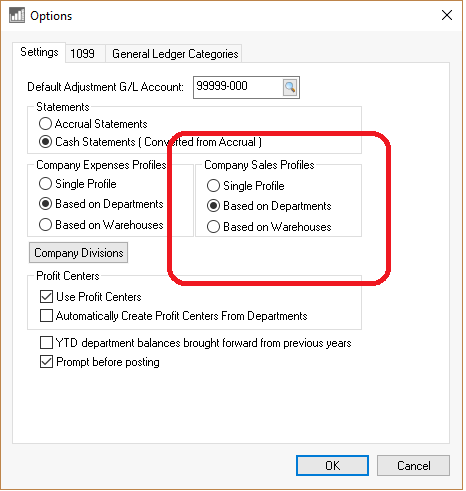Set Up Sales Tax for Multiple Locations
The sales tax rate for a product sold at a store or warehouse versus a product shipped to the customer is calculated based on the point-of-possession address. The address location determines the proper rate based on the tax jurisdiction.
The EBMS software includes the ability to properly calculate sales tax properly for companies with multiple sales locations. The sales locations can be determined by multiple divisions, departments, or inventory warehouse locations. The point of possession may be the customer’s address (Ship To) if the product is shipped to the customer. Review the Creating Shipping Methods section for more info on how to create shipping methods that base the sales tax on the customer’s Ship To location.
The sales tax rate is based on the following sales address locations based on the Settings tab within Financials > Options as shown below:

The sales tax location address is based on the following Company Sales Profiles:
-
Single Profile: The sales tax address is found by selecting File > Company Information from the main EBMS menu and selecting the General tab. Review the Company Information section within the main manual for instructions on this address setting.
-
Based on Departments: The sales tax address for each department is found by selecting File > Company information from the main EBMS menu and selecting the Divisions tab. Review the Using a Department as a Company Division or Location section within the main documentation for details on setting the division or department addresses.
-
Based on Warehouses: The sales tax address for each warehouse or inventory location is found by selecting Inventory > Options from the main EBMS menu and selecting the Warehouse tab. Select a Warehouse and click Properties to view individual warehouse addresses. Review the Create Warehouses section within the Inventory documentation for more details.
Review Origin vs Destination Sales Tax for details on how multiple locations may affect sales tax calculations.
Review the Sales Tax Overview section for more details on how sales tax is calculated.